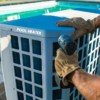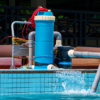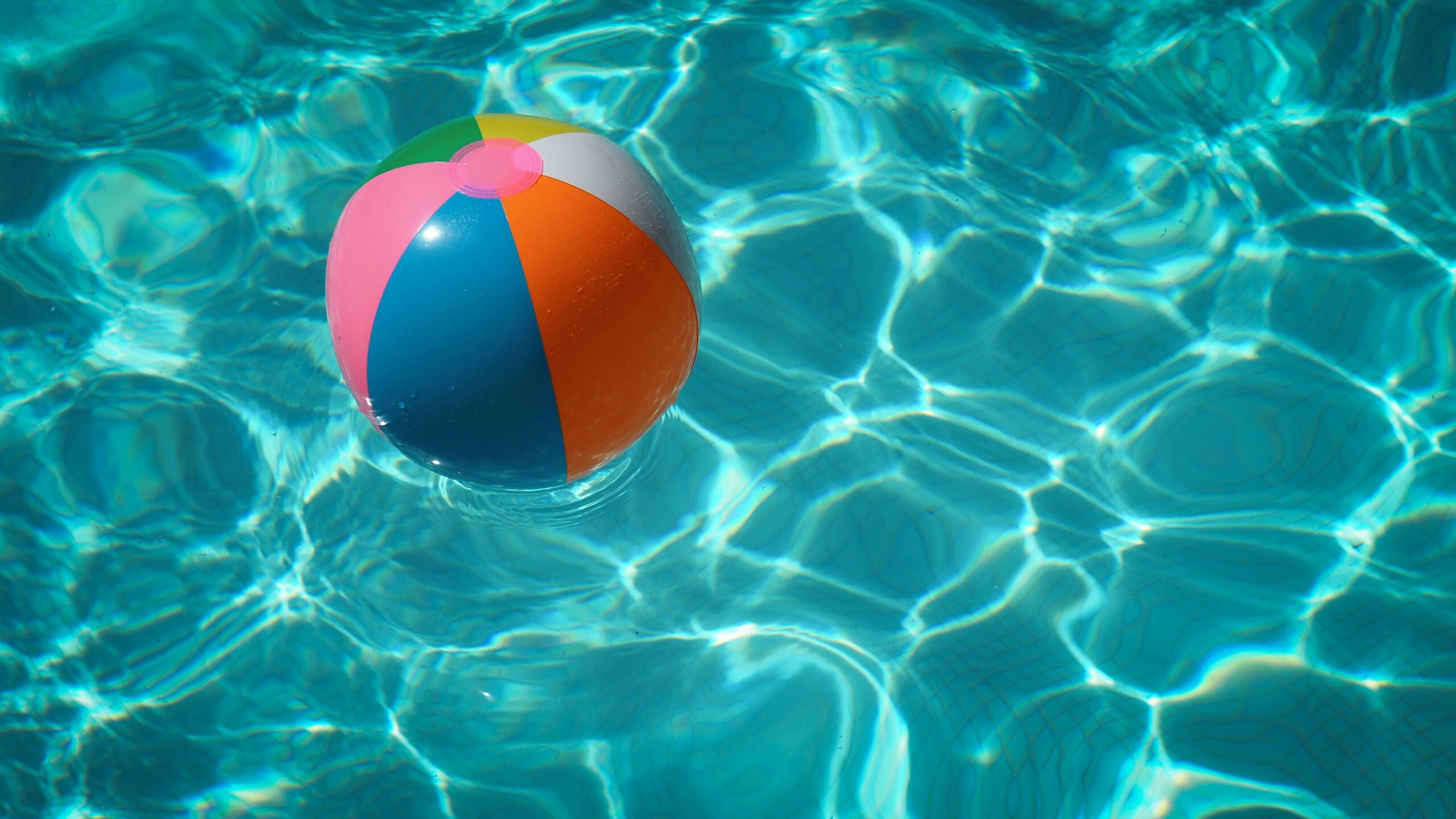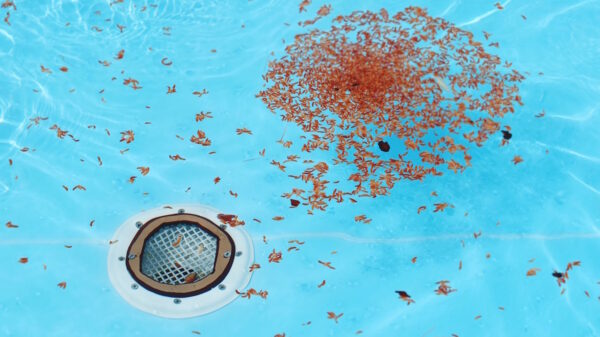Smart Robotic Pool Cleaners
Technology in Robotic Pool Cleaners
Smart robotic pool cleaners are revolutionizing pool maintenance with their cutting-edge AI and advanced sensors. These devices utilize technologies like NaviClean™ to map and maneuver around the unique contours of your pool, ensuring no spot is missed. This capability greatly enhances cleaning efficiency and reduces the time consumers spend managing the pool.
Each robotic cleaner is equipped with high-accuracy sensors and robust algorithms. This technology allows the devices to recognize and traverse obstacles efficiently, whether it’s avoiding pool steps or navigating around ladders.
An exciting feature in these robot cleaners is the ability to learn and remember the shape and size of the pool. This “learning” ability ensures that each cleaning session is optimized for efficiency, reducing redundant paths and focusing on areas that need attention. The more the robotic cleaner is used, the better it gets at its job.
Some robotic pool cleaners come with AI automation, enabling them to decide on the best cleaning route independently. This set-and-forget mechanism increases convenience, especially for busy pool owners who desire a clean pool without the hassle of manual scrubbing.
Performance is further amplified by powerful suction mechanisms. Robots like the AIRROBO PC100 boast a 188W independent water pump motor, providing strong suction power against debris. Coupled with precise motion sensors, users get an immaculate pool with scheduling capability, reducing the need for regular pool cleaning.
Robotic pool cleaners make use of integrated software that works seamlessly with NaviClean™ Technology and other similar advancements, making them a valuable addition to pool maintenance. These smart devices replace traditional cleaning routines, showcasing technological progress and a more efficient approach to pool care.

Benefits of Robotic Pool Cleaners
Robotic pool cleaners offer several advantages to modern homeowners. These devices operate independently of the pool’s existing filtration system, which has both practical and energy-saving benefits. By not relying on the main pool pump or additional booster pumps, they avoid the high energy costs associated with conventional pool cleaning methods. Robotic cleaners have their own filtration systems to capture debris, reducing wear and tear on the main pool filter and the need for backwashing.
With set-and-forget automation, these devices significantly reduce the time and effort spent on pool maintenance. Users can program the robotic cleaner, and it cleans the pool while they attend to other tasks or relax. Many users praise this automation, noting how these units operate discreetly until scheduled or commanded through a smartphone app.
Robotic pool cleaners are designed to operate more efficiently, resulting in lower energy consumption. The optimized cleaning routine also leads to reduced chemical usage. While traditional methods may distribute chemicals indiscriminately, robots pinpoint areas of need through smart technologies, optimizing the spread and amount of chemicals released. This intelligent function helps preserve the ecosystem by preventing oversaturation and chemical leaching.
User experiences highlight the cost-effective benefits of investing in a robotic cleaner, with many homeowners reporting reductions in their pools’ operational costs due to decreased utility and chemical bills. The long-term reliability and consistent performance of these devices across seasons further add to their value proposition.
With these notable advantages, it’s no surprise that robotic pool cleaners are frequently recommended by experts and appreciated by users. They offer a convenient and efficient solution for maintaining crystal-clear pool water while promoting responsible and sustainable pool care practices.
Choosing the Right Robotic Pool Cleaner
When selecting a robotic pool cleaner, consider the type and size of your pool. Choose a model capable of managing your pool’s specific dimensions and volume to ensure effective cleaning. Larger pools may require robots with more powerful motors and enhanced battery life to complete a cleaning cycle efficiently.
The material of your pool is another crucial factor. Cleaners designed for gunite or plaster may have tougher brushing mechanisms than those made for vinyl-lined pools, which require gentler care to avoid damage. Match the cleaner’s capabilities with your pool’s material to ensure thorough cleaning without harm to the surfaces.
Many modern robotic cleaners offer advanced features, such as:
- Programmable schedules
- Ability to adapt routines based on usage and need
- Smart connectivity for real-time management and monitoring through mobile apps
Ease of maintenance is another important consideration. Look for models with easily accessible and cleanable filter baskets to minimize direct handling of dirt and debris. Units that signal when maintenance or filter replacements are due can help ensure the longevity and optimum performance of the cleaner.
Practical features like swivel cables to prevent tangling, powerful suction capabilities, and ease of removal from the pool can enhance cleaning efficiency and operational functionality. Lighter models or those with water expulsion systems can make removing the robot from the pool less laborious.
Choosing the right robotic pool cleaner involves aligning these essential considerations with your specific needs and pool specifications. By focusing on compatibility, material requirements, smart functionalities, and maintenance protocols, you can ensure a clean pool and a seamlessly managed pool maintenance routine.

Maintenance and Care of Robotic Pool Cleaners
Proper maintenance of your robotic pool cleaner is crucial for its longevity and optimal performance. Regular cleaning of the filters is the first step in responsible upkeep. Remove and rinse the filters after each use to prevent accumulated debris from compromising the cleaner’s efficiency. Running water through the filters until it runs clear is a simple yet effective method to keep them in good condition.
Proper storage is another important aspect of maintaining your robotic pool cleaner. When not in use, store the device in a cool, dry place away from direct sunlight and extreme temperatures to prevent degradation of the housing material or premature battery deterioration. Use a protective cover or return the cleaner to its caddy to retain its shape and safeguard sensitive components from dust and other environmental elements.
Common issues can often be resolved with simple DIY solutions. If the cleaner seems less effective, check for:
- An overloaded filter basket
- Misaligned brushes
- A tangled cord
Regular inspection can help catch these problems early. If challenges persist or the cleaner stops functioning, refer to the user manual for specific troubleshooting steps. For concerns beyond basic maintenance, contact customer support or consider professional repair services.
Adhere strictly to the manufacturer’s instructions for care and maintenance. Each model may have unique operational guidelines, from handling batteries and motors to filter care, designed to maximize efficiency. Exceeding run times, improper handling, or neglecting routine checks could lead to setbacks.
For Wi-Fi capable models, keep an eye out for software updates to ensure your device remains equipped with the latest functionality enhancements and security features.
By following these maintenance guidelines and conducting routine inspections, you can preserve your robotic pool cleaner’s performance and ensure a spotless pool for enjoyment. Through disciplined care and monitoring, robotic pool cleaners provide unparalleled convenience, redefining pool maintenance routines and allowing for more leisurely pool experiences.
- Menezes, R. Robotic Pool Cleaners: The Ultimate Guide. Pool Magazine. Published May 15, 2022.
- Chen, S. et al. Intelligent Navigation System for Robotic Pool Cleaners. IEEE Transactions on Consumer Electronics. 2021;67(2):158-166.















